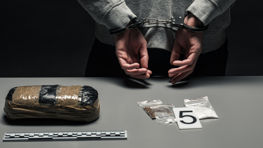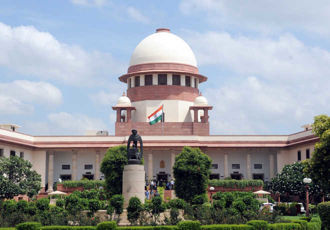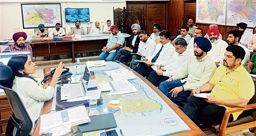
Ratna Raman
Karachi RAJ is a debut novel that takes us through cosmopolitan 21st century Karachi over a period of one year. Author Anis Shivani, provides a robust account of Pakistan’s largest city, home to the second-largest number of people anywhere in the world. Steeped in history, Karachi, a port city is also the capital of the province of Sindh and the financial centre of Pakistan. The 12 chapters of the narrative move from August to July, introducing us to pulsating lives and social mobility in Karachi.
We register the tropical climate, the heat and the rain, in this city flanked by the Arabian Sea and the Kathiawar desert, whose hot loos spill into its very heart. We also meet a large cross-section of people from diverse backgrounds and the occasional migrant contributing to Karachi’s kacchi abaadi. There is also a sprinkling of foreign nationals fascinated by the city’s spirit, who are content to work with NGOs, bypassing cocooned and comfortable lives in home countries such as Ireland, Germany and America.
The kernel of Shivani’s narrative is located not in the stunning high-rises, broad roads and Europeanised sections of modern-day Karachi, which embellish web pages. The tone for Shivani’s narrative is set inside a godown on Bunder Road, close to the colonial Karachi Port Trust buildings. A worker falls down a rickety ladder and injures his back. His work-mates struggle to rush him to the civil hospital where the medical treatment is free.
The godown’s location on Bunder Road makes it a part of prime real estate, yet working conditions are abysmal. These replicate patterns that are a part of the everyday lives of the poor in megacities that dominate the once-colonised Indian subcontinent, where unequal growth and development anomalies have led to a mushrooming and a spiralling and stunting of multiple ways of living.
The basti (based on an actual slum in Karachi) is the central axis around which the narrative spins, heaves and moves. We are introduced to the nuclear family of Aisha and Muhammad Khan and the lives of their two children, Hafiq and Seema. The extended family of the Khans has dwindled away, due to the continuous absence of funds, but the Khans have cemented their lives and built rudimentary rooms and a bathroom for themselves by holding down their jobs at the factory through years of diligence and hard work. Hafiq switches jobs, moving from godown loader to bookseller’s assistant, while Seema wins a scholarship that allows her to study at Karachi University.
Against the backdrop of the million lives in the basti and the struggle of committed teachers, doctors and activists, is the architecture of the old city and its monuments, the oil-spill laden beach and the expansion of real estate markets and suburbs. The lives of Ashiq, the university teacher and his sisters, married to prosperous contractors of cars and real estate, American anthropologist Claire, the political administration, the purveyors of books and manufacturers intersect with the gritty life of the basti residents.
Claire records and lives the life of inmates and is fascinated by the energy of the city and its inhabitants, despite the squalor and poverty that dogs most lives within the basti. Tipu, a photographer trained in America, takes Claire and the reader through a wondrous trip through the old city’s monuments and eateries and unveils other lives and sexualities that exist, understated and vulnerable, even in modern times.
The lives of the well-heeled, with cars and fancy apartments, glitzy malls and the world of big business and celluloid are also woven into the narrative through the lives of Seema and Hafiq. The noise and the cacophony of the bustling city of Karachi, the children playing cricket in the narrow basti lanes, the enthusiastic student groups at the university, formal and fragmenting family ties, minimal changes in women’s lives, public events, lectures, national tragedies, political rivalries, state brutality and cultural soirees jostle and spill over, highlighting the city’s beauty, energy and grit.
Shivani’s narrative is not about extraordinary endings. Seema finds a job as a journalist after graduating from the University. Hafiz’s unsuccessful pursuit of illicit love ends and he is offered yet another job by a well-to-do friend Majid, who needs an assistant for starlet wife, Hina. Meanwhile Claire’s preparations to leave Karachi and return to Boston are interrupted by the floods that devastate large sections of the city and the basti, inflicting havoc and misery, death and disease upon a hapless community. Shivani’s narration of the all-too-familiar complexity and contradiction of the post-colonial city ends on a dismal note, forcing the reader to gaze into the eye of the beast.


























